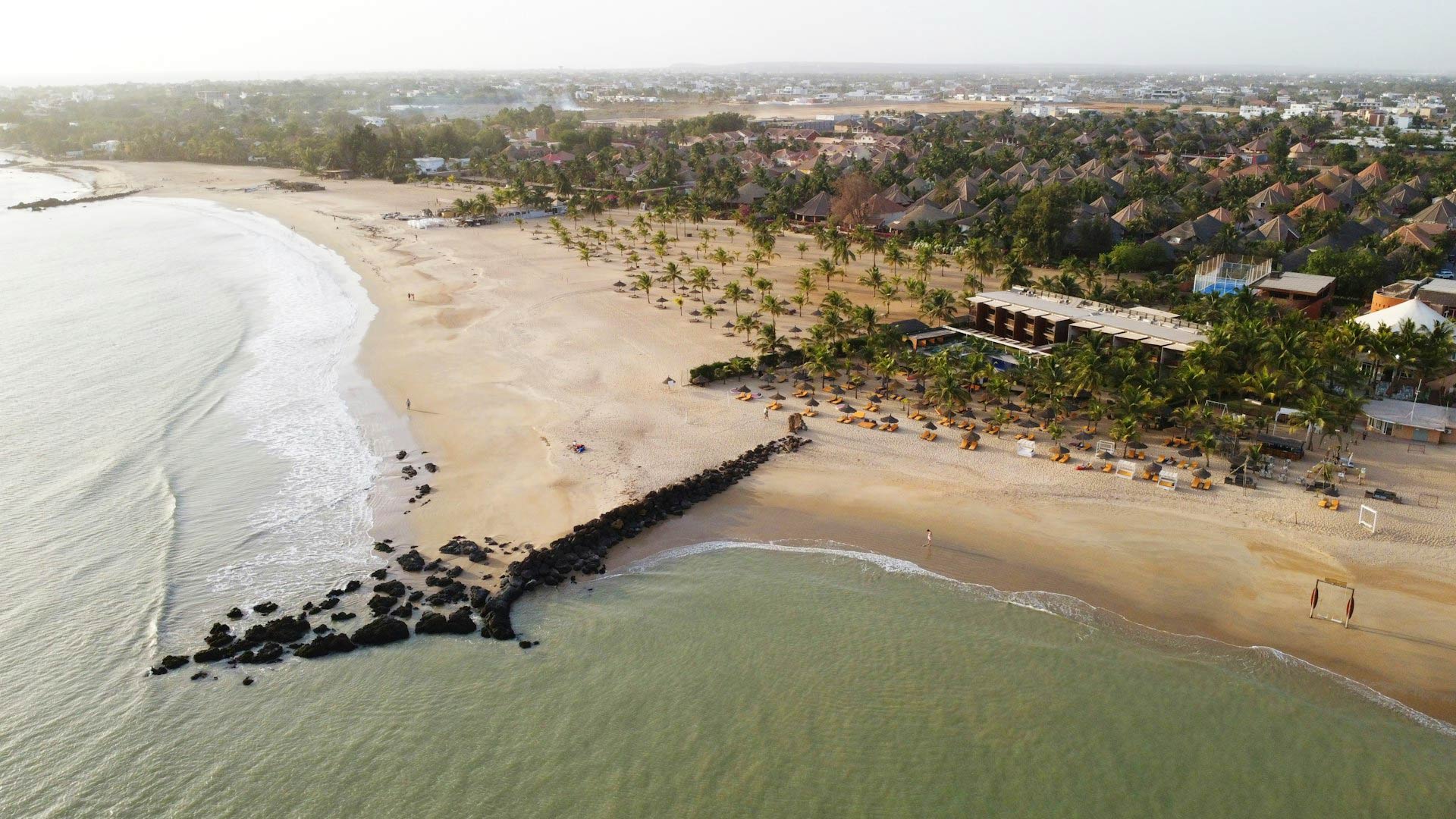West African Odyssey: Liberia to Senegal
A cultural journey to Liberia, Sierra Leone, Guinea, Guinea Bissau, The Gambia, Senegal
New tour with guaranteed departure
Dive deep into the cultural treasures, natural wonders and one-of-a-kind experiences of 6 West African countries: Liberia, Sierra Leone, Guinea, Guinea Bissau, The Gambia and Senegal. This incredible route takes you through regions seldom visited by outsiders. Witness Sierra Leone’s remarkable Bundo mask ceremonies, explore remote, untouched villages and sacred forests in the Bijagos Archipelago, stand within one of the richest ancient complexes on the planet at Senegal’s Sine Ngayene, and much, much more. This adventure is one to be remembered, with comfort, safety, and authentic experiences at the forefront.
| Tour Information | ||
|---|---|---|
| Duration | : | 21 days |
| Minimum | : | 2 persons |
| Maximum | : | N/A |
| Price (From) | : | |
| International air not included | ||
Day 01: Arrive Monrovia (LIBERIA)
We arrive in Monrovia, the capital of Liberia, and are transferred to our hotel. Liberia is the only African country never colonized or made a protectorate. The nation was founded by freed slaves returned from America, known as the Krio people, who today represent around 5% of the population. Considered the creators of the nation, they remain key actors in modern politics and the economy. About 80% of Liberians speak Kreyol, a form of American English “pidgin.” Remainder of the day free.
Overnight: Cape Hotel (4-stars), Monrovia (2 nights)
Day 02: Gbarnga/Monrovia (Drive)
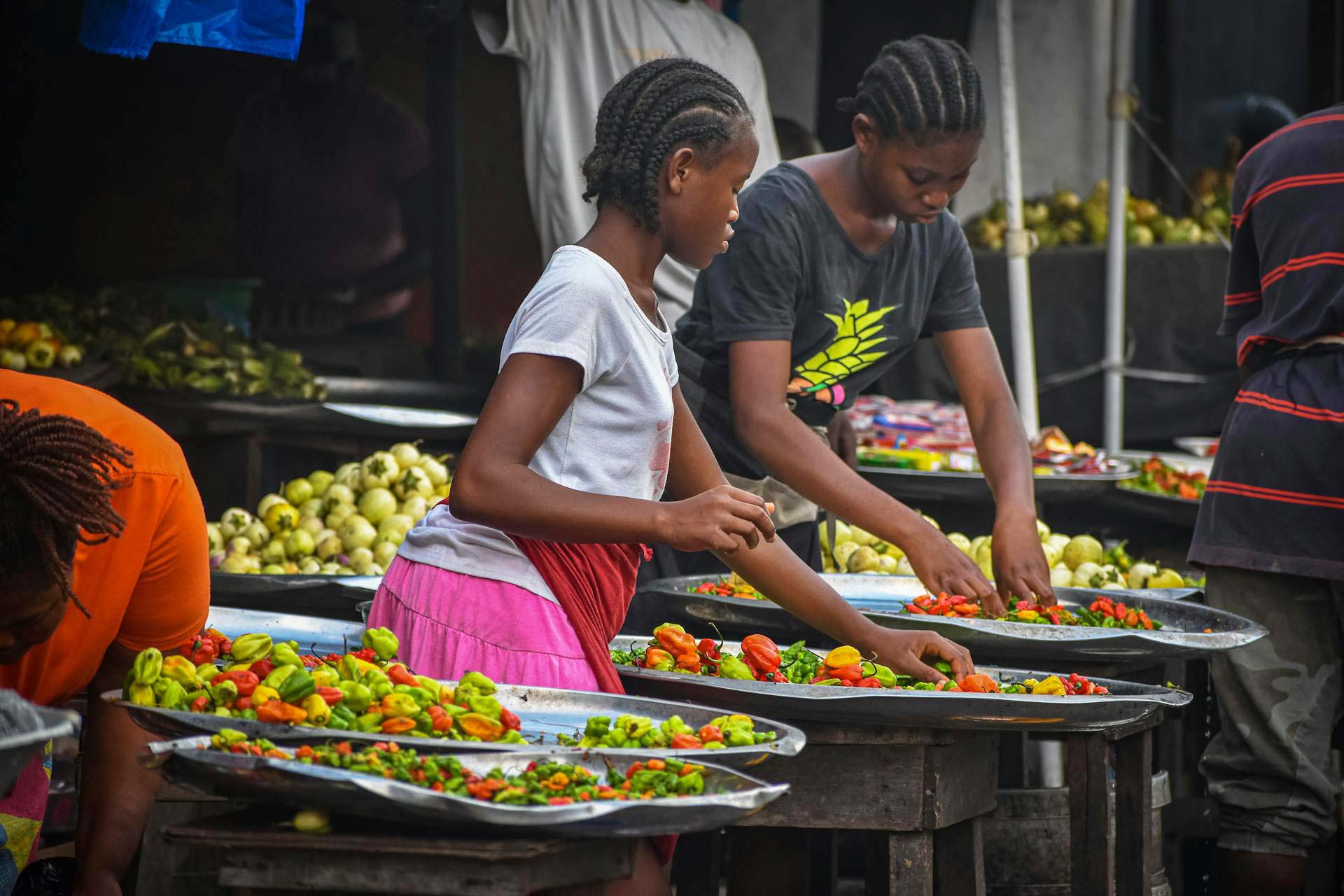
Morning free to recover from jet lag.
In the afternoon, we begin exploring the town from our ocean-view hotel, an ideal base. We visit the Grand Masonic Temple, reflecting the strong influence of Freemasonry on Liberia’s history and Krio culture. We also see what remains of the Ducor Palace, once one of Africa’s first five-star hotels, perched on Monrovia’s highest rocky hill overlooking the city and the bay. The hotel hosted African elite gatherings during independence and is now abandoned, though with permission, a visit may be possible.
Next, we visit the National Museum, a striking example of Krio architecture, housing an extensive collection of ancient masks, ritual objects, and a photographic exhibit on Liberia’s civil wars from 1989 to 2003.
Part 1 ends with transfer to airport for departure flight.
Dinner and overnight stay at the comfortable Cape Hotel, a four-star, international-standard property in Mamba Point, Monrovia’s premier district, or similar. (B, L, D)
Day 03: Monrovia/Bo (Drive) (SIERRA LEONE)
Our Monrovia exploration continues with visits to old colonial buildings and historic stone Krio churches, adding depth to this intriguing city tour.
We then follow the Mano River, the natural border between Liberia and Sierra Leone, and complete border formalities. From there, we drive along a spectacular new road that winds through Sierra Leone’s lush forests. The region’s coastline, named the “Sierra of Lions” by the first Spanish navigators, offers breathtaking scenery.
We arrive in the bustling and welcoming town of Bo, where we will spend two nights. Dinner and overnight stay at the comfortable Bo Inn Hotel or Dohas Hotel, featuring self-contained, air-conditioned rooms, or similar.
Overnight: Bo Inn Hotel/Dohas Hotel, Bo (2 nights) (B, L, D)
Day 04: Bo – Diamonds & Women’s Traditions
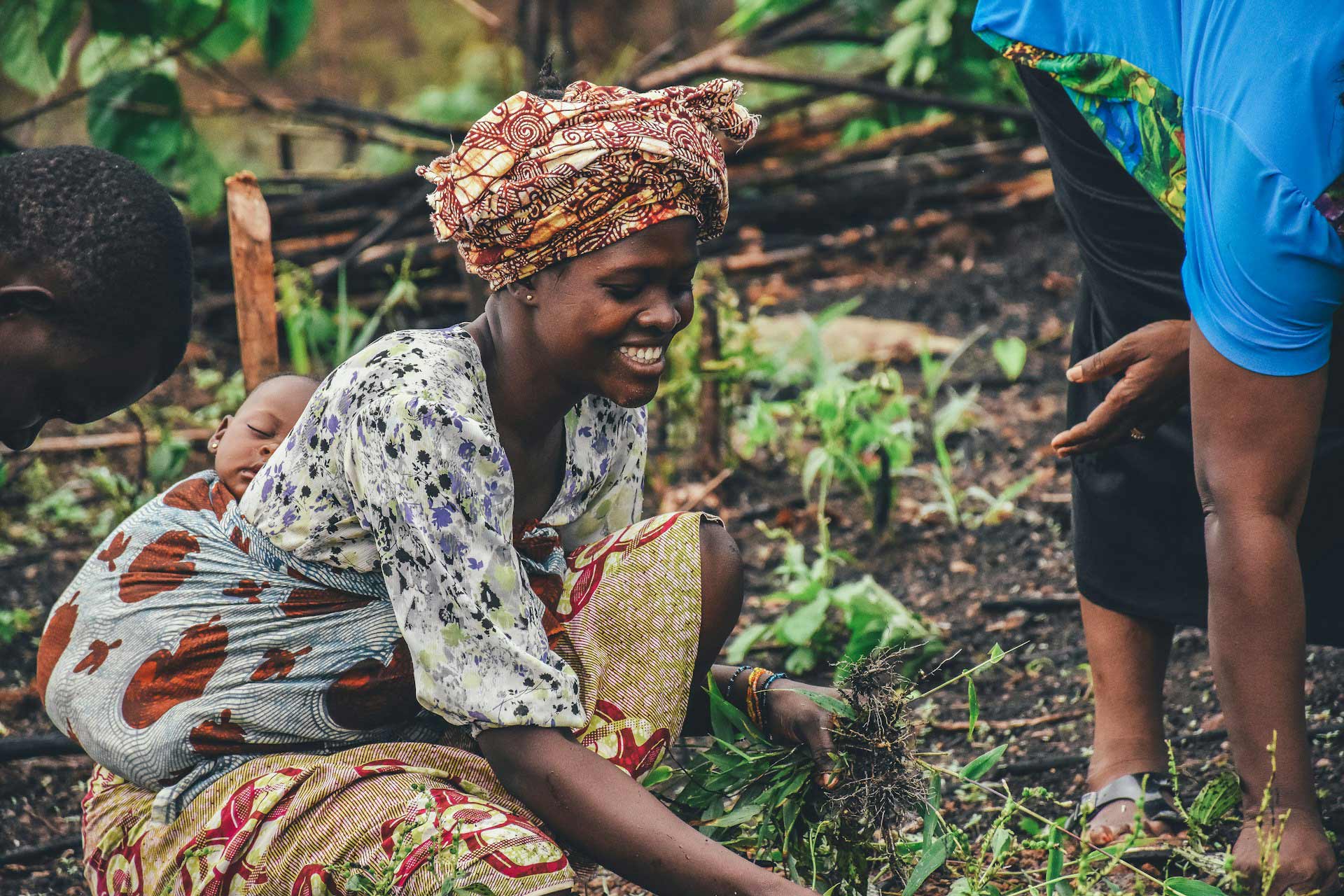
Diamond seeking can be as addictive as gambling, with the possibility of striking a “fortune” reserved for the very lucky. Diamonds have played a significant role in the recent turbulent history of the region, and the quantity and quality of stones remaining is still remarkable. We reach a local village and, after obtaining the chief’s permission, some villagers guide us to a site where we meet the diamond seekers. A local expert explains the artisanal mining techniques and “sand washing” process. In town, we visit a diamond shop where rough stones and mining tools are traded.
Among most African communities, masks are traditionally worn by men, but with the Mende people and neighbouring groups, the Bundo masks are the domain of women. These masks play a vital role in girls’ initiation rites. We visit a village to witness the ceremonial exit of the masks, a lively event attracting a colourful crowd. We return to Bo for dinner and overnight at the comfortable Bo Inn Hotel or Dohas Hotel, featuring self-contained, air-conditioned rooms, or similar. (B, L, D)
Day 05: Bo/Banana Island (Drive/Boat)

Early departure brings us to the Atlantic coast, where at the village of Kent we leave our vehicles to board a local boat for a short cruise to Banana Island. In the afternoon, we circumnavigate the island to explore its pristine landscapes and a remote Krio village.
Lunch, dinner, and overnight are at the cozy Bafa Fix Camp, with permanent tents nestled in the forest and facing the ocean. Facilities include a central sanitary block, and meals feature fine cuisine based on the catch of the day (other options available if requested). Guests can enjoy cocktails and a relaxed tropical atmosphere.
Overnight: Baha Fix Camp, Banana Island (1 night) (B, L, D)
Day 06: Banana Island/Free Town (Boat/Drive)
The boat brings us back to the mainland, and we drive along the coast at the slopes of the Freetown Peninsula mountains, where only the golden beaches separate the lush green vegetation from the deep blue ocean. These mountains give the country its name: Sierra Leone, “Mountains of the Lions.”
The coastline is home to some of West Africa’s finest beaches. We relax, swim, and enjoy lunch at one of the most stunning beaches, River Number Two. Later, we arrive in Freetown, the nation’s capital, and visit the Sierra Leone Peace Museum, which traces the history of the ten-year civil war that devastated the country.
Dinner and overnight are at the comfortable Swiss Hotel, four stars, international standard, with self-contained rooms (no twin rooms available).
Overnight: Swiss Hotel (4-stars), Freetown (1 night) (B, L, D)
Day 07: Freetown/Forecaria (Drive) (GUINEA)
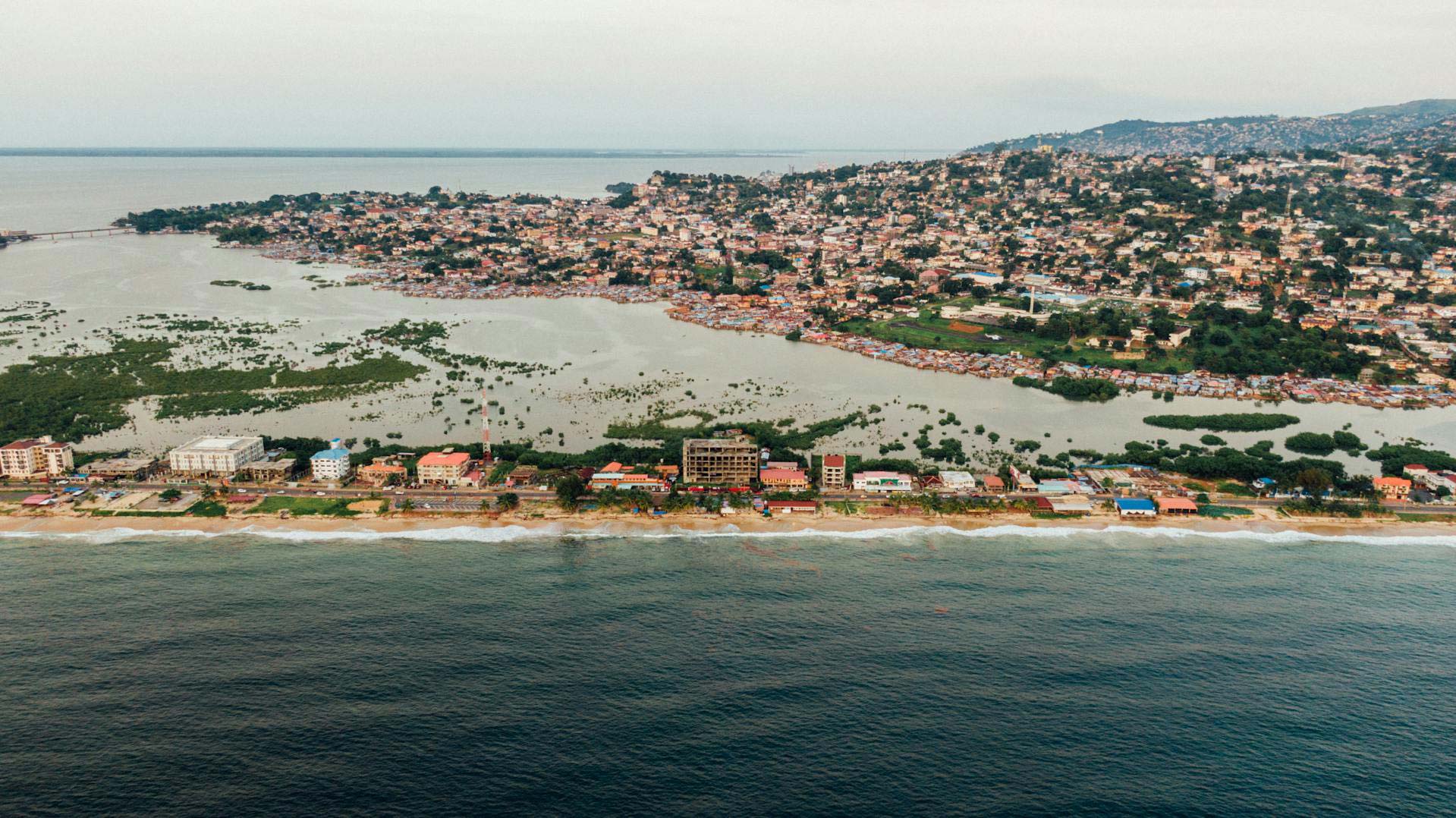
Freetown’s origins date back to 1786, when the first 380 freed African slaves arrived from America, having fought in the independence war alongside the British. After losing the war, they were sent to Sierra Leone to establish the first freed slave settlements. In the first months, the newcomers faced starvation, unfamiliar diseases, and tensions with local populations. During the Napoleonic Wars, Freetown was attacked by seven French vessels and largely destroyed, with a few survivors escaping on pirogues once used by slave traders.
From 1807, following the British abolition of the slave trade, captured slave ships brought freed Africans to Sierra Leone, and in 1808 Freetown became the capital of Britain’s first colony in tropical Africa. The Krio people, descendants of freed slaves, quickly became an educated elite, establishing Fourah Bay University in 1845 and earning Freetown the nickname “Athens of West Africa.” Today, the city is vibrant and colorful, best explored by local Tuc-Tuc. Highlights include the colonial and Krio architecture, the Cotton Tree, the museum, St. George’s Cathedral, and the Palace of Justice.
After completing border formalities, we continue to the Guinean town of Forécaria. Dinner and overnight are at Malaika Village, located on a large river, with self-contained air-conditioned rooms, or similar.
Overnight: Malaika Village, Forecaria (1 night) (B, L, D)
Day 08: Forecaria/Kindia (Drive)
We travel through valleys and mountains to reach Kindia for lunch, a pleasant trading town linking the coastal regions, the vast Fouta Djallon mountains, and the western forests.
Dinner will be a special tasting of Guinean culinary specialties. As night falls, the flicker of firelight and the driving rhythm of drums announce the appearance of the local sacred forest masks, with the Baga Nimba mask—the most spectacular—dancing, a symbol of the country’s heritage.
Dinner and overnight are at Hotel Masabi or Moringa, with air-conditioned, self-contained rooms or bungalows (no twin rooms available), or similar.
Overnight: Hotel Masabi/Hotel Moringa, Kindia (1 night) (B, L, D) – No Twins available
Day 09: Kindia/Fouta Djalon (Drive)
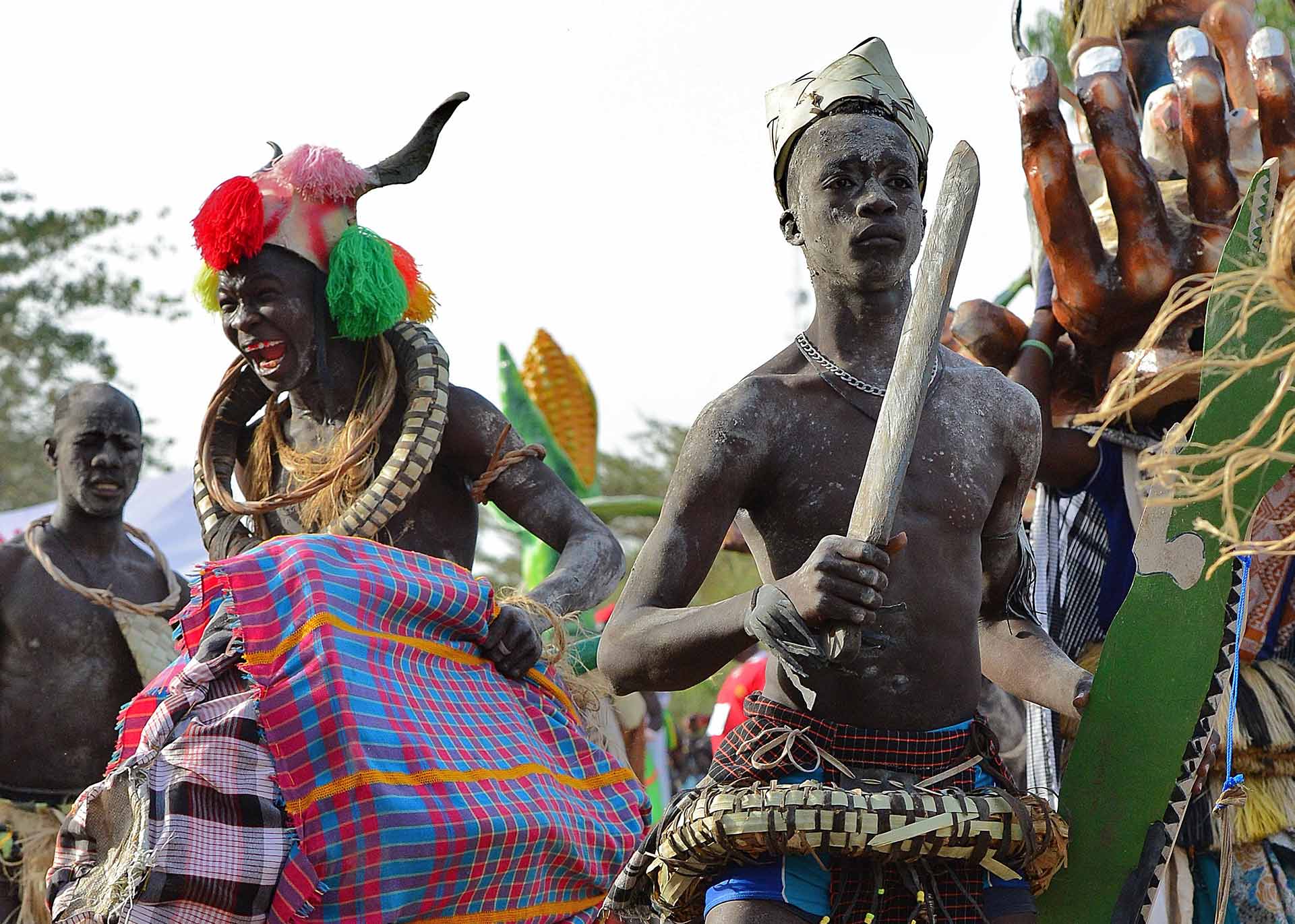
Mamou serves as the gateway to the Fouta Djallon massif. A panoramic road leads us along the southern slope to Dalaba, perched at 3,900 ft (1,200 m).
Fouta Djallon, with its cool and healthy climate, was a favourite holiday region for the French during colonial times. Coniferous forests remain as a reminder of that era, while mountains, plateaus, savannahs, and deep wet valleys create one of Guinea’s most spectacular landscapes. This mountain massif is the “water reservoir” of West Africa, with three major rivers originating here that give their names to Niger, Nigeria, Senegal, and Gambia. The region is home to the Fulani (Peul), famed for their beauty cult and outstanding zebu breeding south of the Sahara.
In Dalaba, we visit the “Casa a Palabra” (House of Words) with its intricate bas-reliefs in authentic Fulani architectural style, once a meeting place for local chiefs and the colonial administration. We also see the villa built for the colonial governor and later used by Guinea’s first president, Sekou Touré, a radical anti-colonial leader with strong Soviet ties. Ruins of villas recall historical moments, including where Miriam Makeba met and married Stokely Carmichael, an exiled activist from the US.
Dinner and overnight are at Tinka Hotel, with air-conditioned, self-contained rooms (no twin rooms available).
Overnight: Tinka Hotel, Fouta Djalon (1 night) (B, L, D) – No Twins available
Day 10: Fouta Djalon/Labe (Drive)

A full day is devoted to exploring Fouta Djallon, where mountains blend with savannah, deep valleys, and towering waterfalls framed by forests create landscapes of pristine beauty. This region is home to the Peul (also called Fulla or Fulani), renowned for their striking appearance and exceptional zebu herding skills. In the 17th century, the Peul launched a Jihad from these mountains, eventually conquering much of the savannah as far as Cameroon; today, they remain the largest ethnic group across the sub-Saharan savannahs.
We visit a large round clay hut with an ornate grass roof where the main council convenes and traditional chiefs from across Fouta Djallon are appointed. Through our local connections, we will request a private audience with the chiefs and dignitaries of the council.
In the evening, we reach Labe, often called the “capital” of Fouta Djallon. Dinner and overnight are at Hotel Tata, offering simple but clean self-contained air-conditioned bungalows.
Overnight: Hotel Tata, Labe (1 night) (B, L, D)
Day 11: Labe/Gabu (GUINEA BISSAU)
A very early departure takes us on a full day’s drive through a region of wild, open spaces, dramatic mountains blanketed with wooded savannah, tropical dry forests, and remote Peul (Fulla) settlements. At a secluded border, we cross into Guinea-Bissau. In the evening, we arrive in Gabu. Dinner and overnight are at Hotel Karsa, featuring air-conditioned self-contained rooms.
Overnight: Hotel Karsa, Gabu (1 night) (B, L, D)
Day 12: Gabu/Bissau (Drive)
Morning departure takes us off the main road to a small village in the Malinké region. The Malinké, descendants of the ancient Mali Empire, are spread across Mali, Guinea Conakry, Ivory Coast, Senegal, and Guinea-Bissau. We visit a village renowned for griot families—musician-narrators whose traditions date back to the 13th-century Mali Empire. Skilled in crafting musical instruments, they will perform a concert for us. After lunch, we explore Bafata to admire its Portuguese colonial architecture, then continue to Bissau, the country’s capital. Overnight stay is at Dunia Hotel, four stars, international standard.
Overnight: Dunia Hotel (4-star), Bissau (1 night) (B, L, D)
Day 13: Bissau/Bolama (Drive/Boat)

We embark on a three-day spectacular speedboat journey to explore the Bijagos Archipelago, its unique nature, and isolated communities. Comprising 88 islands and islets, the Archipelago lies about 40 miles off the coast and is a true “geographical jewel” for both its natural and cultural richness. We visit Bolama, the former capital of Portuguese Guinea from 1871 to 1941, now partly reclaimed by tropical vegetation. Built on the model of a «Castrum Romanum» (Roman citadel), Bolama features wide straight avenues, empty sunny squares, dry fountains, and fading Neo-Palladian buildings, while goats graze peacefully near the former governor’s palace, giving the town a fairy-tale ghost-town atmosphere. Dinner and overnight are at Ponta Anchaca, an international standard 4-star resort, with comfortable air-conditioned wooden bungalows hidden in the vegetation and facing the ocean. The resort’s restaurant on stilts serves refined French and tropical cuisine, and it will be our base for two nights.
Overnight: Ponta Anchaca (4-star), Bolama (2 nights) (B, L, D)
Day 14: Bolama – Remote Villages
In the afternoon, we take a short boat ride to Bubaque Island, the tiny “capital” of the Bijagos Archipelago, home to a small but colorful market. The islands’ remoteness, limited transport, and the locals’ strong attachment to tradition mean the Bijagos tribes have remained largely untouched by the outside world. Village life is guided by initiation rites and secret ceremonies, including a seven-year rite where young men live apart from women in a “convent.” Life here still follows the natural “cycle of seasons,” with the main ceremonies taking place after the harvest during the long dry season. The most spectacular mask is Vaca Bruto (wild bull), portrayed with frosted glass eyes, real horns, leather ears, and a rope through the nostril, representing a young man at the height of his physical strength but not yet fully initiated; the entire village gathers to witness this captivating ceremony. We return to our comfortable Ponta Anchaca Resort, 4-star air-conditioned wooden bungalows hidden in the vegetation and facing the ocean. (B, L, D)
Day 15: Bolama/Bissau (Boat/Drive)
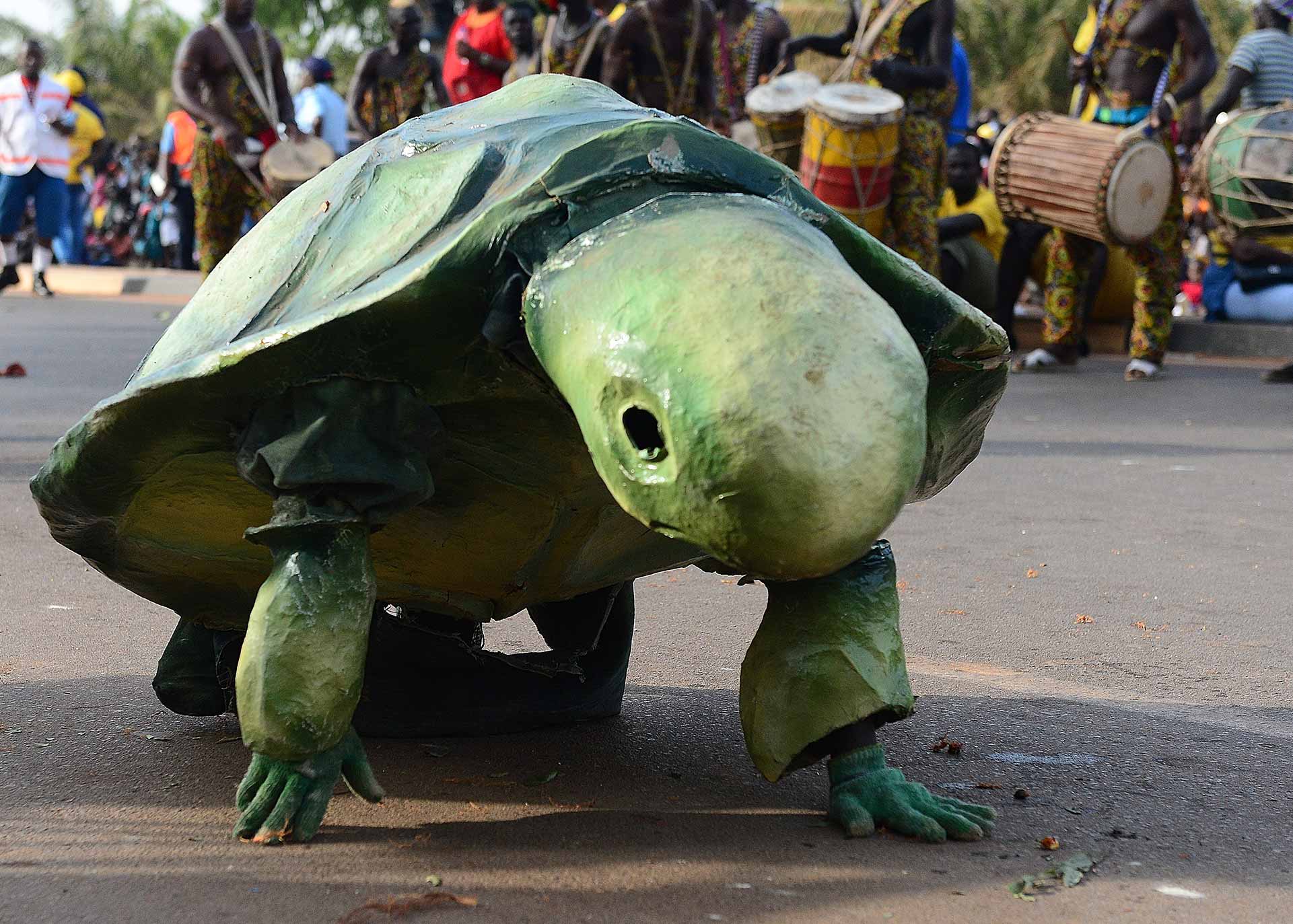
Morning at leisure to relax on the wild beaches of Ponta Anchaca or by the swimming pool. On request (not included), an early morning excursion to Orango Island offers the chance to see a small population of hippos that have adapted to life on the islands. Usually found in freshwater swamps, these hippos occasionally swim in the ocean; a local guide will lead the visit, though sightings are not guaranteed. In the afternoon, we navigate back to Bissau, where a vehicle awaits for a brief city tour. Bissau is a small yet intriguing capital, with charming old Portuguese architecture and a massive fort, a reminder of the region’s slave trade history. Dinner and overnight stay at the Azalai-Dunia Hotel, four stars, international standard, or similar.
Overnight: Azalai-Dunia Hotel (4-star), Bissau (1 night) (B, L, D)
Day 16: Bissau/Ziguinchor (Drive) (SENEGAL)
We travel north through a unique ecosystem where Bolons—long sea arms—penetrate inland for over a hundred miles, creating a vast area that floods temporarily. The boundaries between salt water, land, and fresh water shift with the tides: during high tide, 23% of Guinea Bissau is submerged, re-emerging as the water recedes. Crossing into Senegal, we reach Ziguinchor, the capital of the Casamance region, a charming town with striking French colonial architecture and a bustling market. Dinner and overnight stay at the Kadiandoumange Hotel, our base for two nights.
Set in traditional colonial-style buildings with gardens overlooking the Casamance River, the hotel offers air-conditioned self-contained rooms blending modern comfort with stylish African furniture, and a gastronomic restaurant on a terrace above the river—or similar.
Overnight: Kadiadoumange Hotel, Ziguinchor (2 nights) (B, L, D)
Day 17: Ziguinchor - Kings & Priests
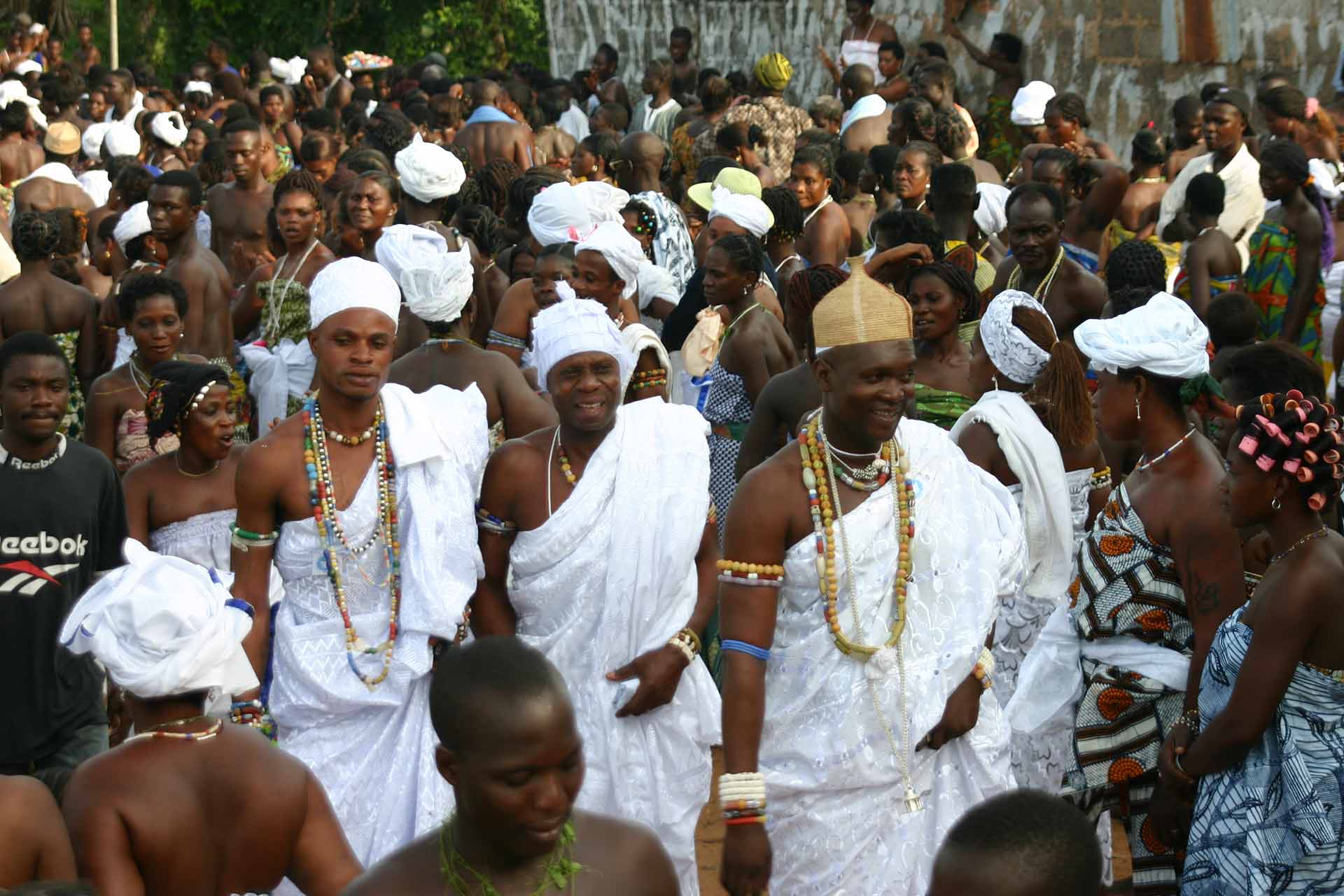
We drive through a spectacular landscape of lagoons, mangroves, and tiny islands formed by the Casamance River estuary. In a remote village, we are received by the Monarch of one of the oldest Diola (Jula) Kingdoms. In ancient African tradition, the King is also the High Priest, holding both political and mystical authority. After the traditional offering of libations at the edge of the sacred forest, His Majesty will answer our questions about the history of his people, the rules of a traditional chief, and the complex taboos and mystical responsibilities of kingship in Diola culture. In the afternoon, we join the ritual dances of the sacred Diola masks, performed by a secret society whose dancers’ identities remain hidden; the masks are believed to be animated by spirits. Drums, dances, and a vibrant crowd bring the small village to life beneath the shade of towering kapok trees. Return to our base in Ziguinchor at the Kadiandoumange Hotel, with traditional colonial-style buildings and gardens overlooking the Casamance River. The hotel offers air-conditioned, self-contained rooms combining modern comfort with stylish African furnishings, and a gastronomic restaurant on a terrace above the river—or similar. (B, L, D)
Day 18: Ziguichor/Banjul (Drive) (GAMBIA)
We cross the Gambian border and arrive in Banjul, the capital of the country, for a visit to the ethnographic museum. In the afternoon, we enjoy a brief but intense bird-watching session, guided by an expert through the region’s diverse natural environments. Gambia is renowned as a birding destination, offering a fascinating variety of species. Dinner and overnight stay at the Kairaba Beach Hotel, or similar.
Overnight: Kairaba Beach Hotel, Banjul (1 night) (B, L, D)
Day 19: Banjul/Sine Ngayene (Drive) (SENEGAL)
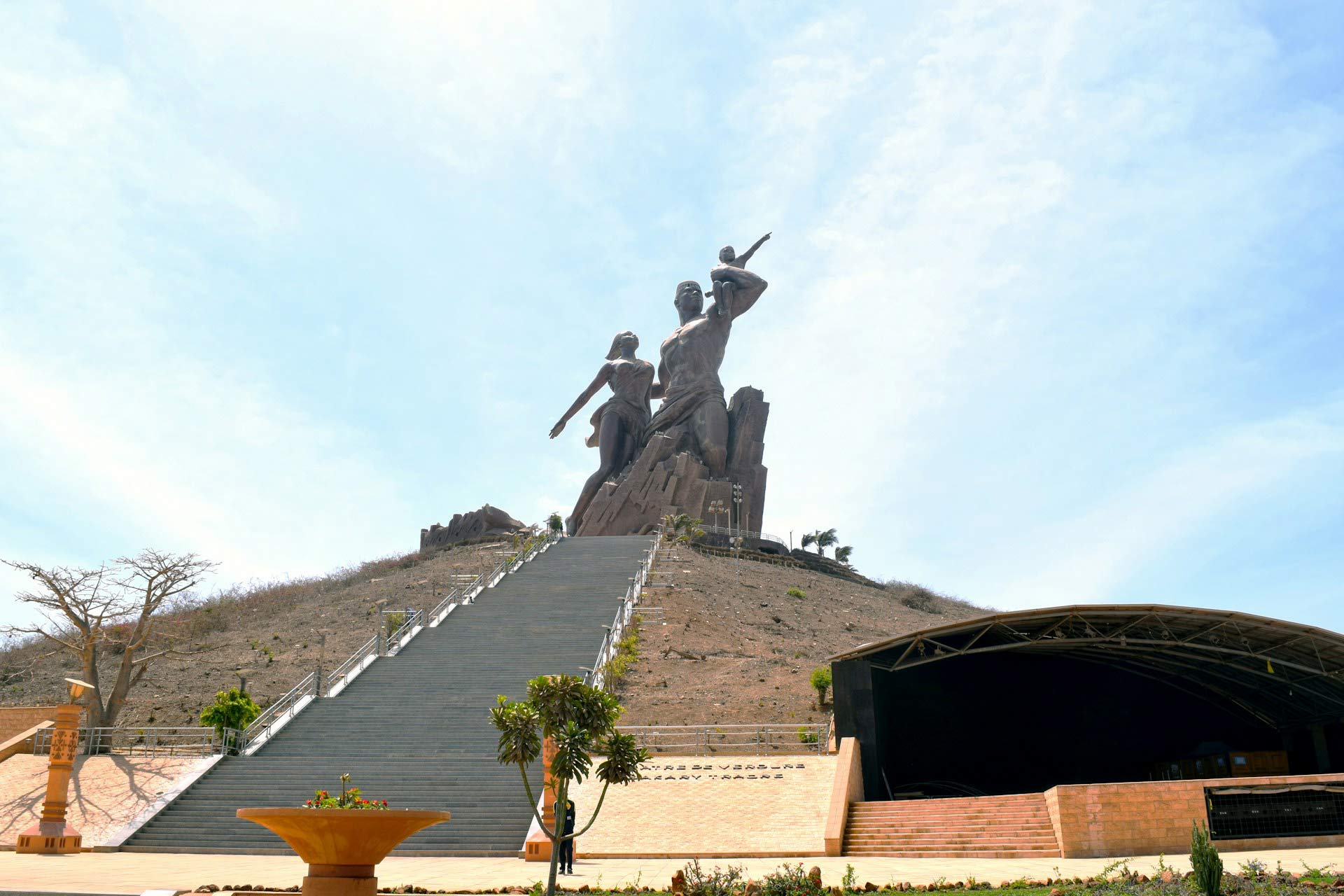
Arrival on this day in Dakar if taking Part 3 alone.
We take a colourful, very local ferry crossing of the wide Gambia River estuary to reach the north bank. The region between the north bank of the river and Senegal was once home to one of the world’s largest megalithic civilizations. Just after crossing into Senegal, we leave the main road for a small track to reach Sine Ngayene, the richest megalithic site on the planet, featuring 1,102 erected stones. Dinner and overnight stay at the comfortable air-conditioned bungalows of Kabacoto Safari Lodge or Relais de Kaolak, with swimming pool, overlooking the lake and lagoons, or similar.
Overnight: Kabacoto Safari Lodge/Relais de Kaolak, Sine Ngayene (1 night) (B, L, D)
Day 20: Sine Ngayene/Goree Island (Drive/Boat)
Arrival in Dakar for lunch at a fishing port restaurant, specializing in the catch of the day (other meals available on request). A ferry will take us to Gorée Island, just opposite Dakar. Gorée was once crowded with slaves awaiting shipment to the Americas. Fully restored, it stands today as a poignant reminder of those times. Its breezy climate, rich history, and historic architecture, combined with restaurants and boutiques, make Gorée a fascinating and stylish destination for both locals and visitors. The best time to experience the island’s atmosphere is at sunset, when day-trippers and tourists have left. Dinner at a typical restaurant and overnight stay at Maison Municipale, a guesthouse in a restored historic building with air-conditioned, self-contained large rooms, or similar.
Overnight: Maison Municipale, Goree Island (1 night) (B, L, D)
Day 21: Goree Island/Depart Dakar (Boat/Drive)
Ferry to Dakar, the capital, which became a key centre of political, artistic, and intellectual renewal during the independence era and remains the liveliest metropolis in French-speaking West Africa. Visit the Musée des Civilisations Noires, featuring impressive collections of tribal art, textiles, and works by contemporary local artists. Explore the Plateau district, including the Presidential Palace, a typical market, and the fully restored Dakar-Bamako railway station, a fine example of colonial architecture.
Transfer to the airport in time for your departure flight. (B)
B=Breakfast, L=Lunch, D=Dinner
Departure Dates & Prices
We accept payments in US$, CA$ as well as in other convertible currencies like EUR, AUD and GBP. Tour prices have been costed in US$. CA$ price shown below is an indicative amount reached at by using the conversion rate at the time of web posting and will be applicable if there is no change in the conversion rate. Should the currency conversion rate change, the US$ pricing will prevail. Bestway Tours & Safaris offers a conversion rate protection. Once full payment has been received and no modification has been made to the tour itinerary, we will honour that rate. For complete payment procedures, please click here
| 2026 | Per Person on Twin Sharing |
Single Room Supplement |
|---|---|---|
| Departures | ||
| MARCH 2026: Start in Monrovia on March 19, 2026 & end in Dakar on April 8, 2026 | ||
| March 19, 2026 | US$ 12262 | US$ 1110 |
Reduction of US$ 1939 per person if 6 or more guests confirm on departure.
Reduction of CA$ 2791 per person if 6 or more guests confirm on departure. |
||
| NOVEMBER 2026: Start in Dakar on November 30, 2026 & end in Monrovia on December 20, 2026 | ||
| Based on 2 or 3 participants | US$ 16495 | US$ 1110 |
| Based on 4 or 5 participants |
US$ 12262 | US$ 1110 |
| Based on 6+ participants |
US$ 10323 | US$ 1110 |
| 2026 | Per Person on Twin Sharing |
Single Room Supplement |
|---|---|---|
| Departures | ||
| MARCH 2026: Start in Monrovia on March 19, 2026 & end in Dakar on April 8, 2026 | ||
| March 19, 2026 | CA$ 17646 | CA$ 1598 |
Reduction of US$ 1939 per person if 6 or more guests confirm on departure.
Reduction of CA$ 2791 per person if 6 or more guests confirm on departure. |
||
| NOVEMBER 2026: Start in Dakar on November 30, 2026 & end in Monrovia on December 20, 2026 | ||
| Based on 2 or 3 participants | CA$ 23737 | CA$ 1598 |
| Based on 4 or 5 participants |
CA$ 17646 | CA$ 1598 |
| Based on 6+ participants |
CA$ 14855 | CA$ 1598 |
Guaranteed Departures
| This tour can also be taken in smaller legs. Please contact us for details if you are interested in a specific segment. |
Notes
- Important note on visas: After booking, please contact us immediately via visas. We will provide advice and suggestions on how to obtain the E-Visas and when Invitation Letters are required, even if not explicitly requested by local authorities. Visa rules are frequently updated, so we will send the most current information available.
- Deposit is 30% of tour price.
- Climate: Climate: This departure is scheduled to take advantage of ideal weather. Spring falls within the dry season, making it the best time to explore West Africa.
- Comfort: To truly enjoy a long journey off the beaten path, comfort is essential. For rough tracks and desert dunes, we use modern 4x4 vehicles with air-conditioning, while well-maintained minibuses handle the smoother main roads. Overnight stays include four-star (****) or character-rich hotels in the capitals, and newer properties with private bathrooms and air-conditioning elsewhere. Each accommodation is selected for its comfort, quality dining, friendly atmosphere, architectural charm, and scenic setting.
- Safety: Your well-being comes first. This expedition is backed by years of regional expertise and led by experienced guides. A trusted local network provides constant monitoring and real-time updates, ensuring the route remains secure at all times.
Expedition leaders have extensive experience guiding travelers off the beaten track in this region, with an excellent understanding of African culture and traditions.
This is an exploratory itinerary. Participants must be flexible and ready to enjoy unique encounters, as well as some unexpected situations that are part of the African experience. - Vaccinations: Yellow fever is compulsory. Malaria prophylaxis is highly recommended. Cholera is not currently required, but please check prior to departure.
- Luggage: Due to the exploratory nature of the itinerary, luggage should be limited to approximately 20 kg (45 lbs).
- Travel insurance: Not included. It is mandatory for medical assistance, repatriation, and coverage of material or physical damages.
- Hotels: We have carefully selected hotels for quality of service and, where possible, architectural character. Due to potential room availability issues, the tour leader may replace hotels with similar alternatives. Four-star hotels are used in capitals, and the best available hotels inland, always with air-conditioned rooms. Hotel staircases may have uneven steps, so please take care.
- Meals: Lunches will include cold meals, picnics, or meals at restaurants with pre-selected menus. Dinners will be at hotel restaurants with pre-selected menus. One bottle of water per day is included during visits.
- Notice: The itinerary is designed to explore fascinating places, where visits by foreigners often remain exceptional events. Participants should be cooperative, tolerant, and flexible to fully enjoy the expedition and appreciate the unique landscapes, as well as the spontaneous hospitality, magic, and mystery of Africa, including local metaphysics, ceremonies, life philosophies, and beliefs that the people share with us.
Itineraries, visits, and overnight accommodations may be modified due to local conditions or force majeure. Only the organizers and the tour leader can decide on any changes.
Inclusions
- 20 Nights' accommodation as mentioned or similar, including hotel taxes
- 58 Meals as mentioned (B=Breakfast, L=Lunch, D=Dinner)
- All sightseeing and transfers by 4WD vehicles, minibus and boats
- Services of local English speaking guides
- Entrance fees to museums, sites & game parks included in the itinerary
- International airfares
- Insurance/visas
- Tips/gratuities
- Mineral water and drinks at restaurants & hotel
- Portage
- Photography fees
Participants
This tour operates on a minimum of 2 participants
Customised Itinerary
If you would like to have a tour on dates other than the above ones or with a customised itinerary, please contact us and we will be happy to work out an exclusive program for you.
Contact Info
Email us at bestway@bestway.com or call 1-604-264-7378.
Residents of U.S.A./Canada may call us toll free at 1-800-663-0844.
Inquire About this Trip
Tour Application Form

